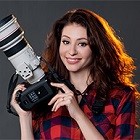11 Best Lenses for Landscape Photography in 2025
Before choosing the lens for landscape photography, you should decide what focal length you may need: telephoto 50mm+ or wide 18mm? You definitely need a fast (f/4 or below) landscape lens for shooting distant nature landscapes and isolating subjects.
If you want to upgrade your kit lens or look for a new camera-lens combination or just need a better glass, this list will help in your buying process.
11 Best Lenses for Landscape Photography
- Nikon 50mm f/1.8G - Our Choice
- Canon EF 16-35mm f/2.8L – Best wide angle lens for landscapes
- Sony-E 10-18mm f/4 - Best optical stabilization
- Nikon 24-70mm f/2.8 - Landscape lens for FX cameras
- Canon EF 100-400mm f/4.5-5.6L – For long distances
- Sigma 14-24mm f/2.8 Art – For amateurs
- Sony 35mm f/2.8 – Budget and light
- Sigma 24-105mm f/ – For landscape lovers
- Leica SL 24-90mm f/2.8-4 – For high-resolution landscape photos
- Zeiss Batis 18mm f/2.8 – For night landscape
- Fujifilm XF 100-400mm f/4.5-5.6 - For distant landscapes
Here is the list of lenses: wide-angle models to extend a captured scene and telephoto lenses to photograph smaller elements in detail when you are far away. Let's have a look at each lens and think about how, why, and when we might use that lens and how that will affect your landscape photography.
1. Nikon 50mm f/1.8G
FixThePhoto editors’ choice
Size: 5.12 x 6.93 x 5.12 in | Weight: 6.53 oz | Minimum focus distance: 1.48 ft | Angle of view: 47°
$ VIEW IN AMAZON

⊕ Small size
⊕ Amazing sharpness
⊕ Multi-layer coating
⊕ Affordable
⊖ Not found
Nikon 50mm f/1.8 is positioned as a portrait lens. Nevertheless, it wonderfully copes with landscape photography, making it one of the best lenses for Nikon D7000 users who want to explore creative experiments in their landscape shots. I like this lens for its compact size and amazing sharpness that lets you take great shots even at f/5.6.
Its focal length makes Nikon 50mm f/1.8 one of the best lenses for landscapes, especially if you like creative experiments.
In case you need to photograph, for instance, a small part of a tree, like leaves or branches, together with a blurred sunrise background in one picture, the lens is capable of doing that. Moving around and experimenting with angles and styles is also possible.

One more advantage of this intuitive and universal lens is its flawless operation in various lighting conditions. The model’s Super Integrated Coating lowers ghosting and flare, and, as a result, provides improved contrast and accurate color in poorly lit and bright locations.
- Choose the best camera for landscape photography.
2. Canon EF 16-35mm f/2.8L III USM
Best wide-angle lens for landscape photography
Size: 5 x 3.5 x 3.5 in | Weight: 1.74 lbs | Minimum focus distance: 0.92 ft. | № of diaphragm blades: 9
$![]() VIEW IN AMAZON
VIEW IN AMAZON

⊕ Completely weather-proof
⊕ Sturdy build
⊕ Subwavelength & Air Sphere Coatings
⊕ Remarkable sharpness
⊖ High price
Many landscape shooters call Canon EF 16-35mm f/2.8L III one of the best landscape lenses and one of the most popular models in this genre. The lens allows capturing plenty of background and foreground, preserving incredibly clear and sharp details.
With this zoomable model, it is possible to shoot a scene in a variety of ways. Thanks to the maximum f/2.8 aperture, a photographer can fully manage the depth of field and maintain that aperture for the entire zoom range. This will especially come in handy when you take pictures outside in twilight or bad weather.
On the whole, the model can withstand all kinds of harsh weather conditions and still work stably.

The lens boasts Air Sphere Coatings for lowering flare and ghosting along with Subwavelength Coatings for preventing reflections. As a result, you get a clear shot with decreased aberrations from reflected light.
3. Sony-E 10-18mm f/4 OSS
Best lens for landscape photography with optical stabilization
Size: 2.52 x 2.76 x 2.76 in | Weight: 7.94 oz | Minimum Focus Distance: 0.82 ft | Magnification: 0.1x
$![]() VIEW IN AMAZON
VIEW IN AMAZON

⊕ Small size and weight
⊕ Support for front filters
⊕ Sturdy metal build
⊕ Optical stabilization
⊖ Distortions
Sony 10-18mm f/4 G OSS is a lens with the widest zoom that you can get for APS-C Sony cameras. Many travel and landscape photographers are pleasantly surprised by the results the lens provides.
It doesn’t weigh a lot and can be easily carried around. Besides, the model boasts remarkable stabilization, which is important if you don’t have a tripod with you.
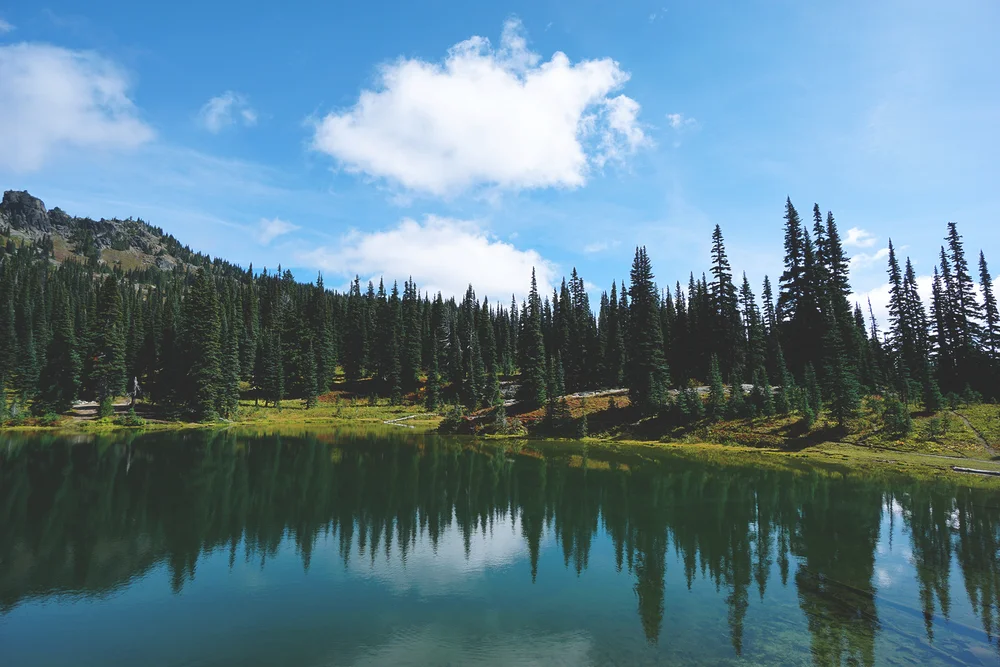
The lens is praised for an internal focus design that contributes to the flexible and fast autofocus. Thanks to the constant f/4 maximum aperture, the model operates stably in the entire zoom range.
Photographers can also fully manage focus position when shooting with shallow depth of field. Working with selective focus, it is possible to get stunning bokeh thanks to the rounded seven-blade diaphragm.
4. Nikon 24-70mm f/2.8 ED AF-S
Best landscape lens for FX cameras
Size: 5.24 x 3.27 x 3.27 in | Weight: 2.36 lbs | Minimum Focus Distance: 1.2 ft | Magnification: 0.27x
$![]() VIEW IN AMAZON
VIEW IN AMAZON

⊕ Sturdy construction
⊕ Remarkable AF system
⊕ Constant f/2.8 aperture
⊕ Multi-layer-coating
⊖ Heavy
In case you use an FX camera, Nikon 24-70mm f/2.8G ED will be the best lens for nature photography. However, it isn’t suitable for DX cameras as it is way too long for a wide-angle model.
Nikon 24-70mm is quite bulky but it is so versatile that the disadvantage of weight becomes insignificant. The model offers 15 lens elements in 11 groups. They include super low dispersion glass elements that successfully decrease chromatic aberrations and boost the sharpness of the shot. This makes it an excellent choice for capturing breathtaking natural scenes as well, further solidifying its reputation as one of the best Nikon lenses for landscape photography.

The construction is ultra-sturdy and can withstand the roughest weather conditions. Due to the presence of a Super Integrated Coating and a Nano Crystal Coat, the model reduces ghosting and flare, providing better contrast and more accurate color.
5. Canon EF 100-400mm f/4.5-5.6L IS II USM
Best long landscape lens
Size: 12.3 x 7.3 x 7.25 in | Weight: 56.1 oz | Minimum Focus Distance: 3.22 ft | Magnification: 0.31x
$![]() VIEW IN AMAZON
VIEW IN AMAZON

⊕ Incredible sharpness for the entire zoom range
⊕ Optical stabilization
⊕ Fast focus
⊕ Dust- and weather-proof
⊖ barrel distortion at 100mm
This lens is generally perceived as a wonderful option for shooting wildlife and sports. But it offers some features that make the model a good landscape lens as well.
EF 100–400mm f/4.5–5.6L IS II enables photographers to show nature scenes differently, concentrating on separate elements or areas, for instance, a group of trees.
The lens combines remarkable performance, praiseworthy resolving power, incredible sharpness, and small size, especially considering its maximum focal length. Photographers can make use of extra reach up to 400mm.

I like the model’s Zoom Touch Adjustment ring that lets shooters tweak tensioning for the zoom depending on the subject they are photographing.
Another advantage of the lens is the Image Stabilizer of up to four stops. This feature is necessary for the cases when you photograph with a tripod in an open area located at a high point, in particular, when it is very windy.
6. Sigma 14-24mm f/2.8 Art
Most versatile landscape lens
Size: 3.8 x 9.2 x 5.3 in | Weight: 2.5 lbs | Minimum Focus Distance: 0.91 ft | Magnification: 0.14x
$![]() VIEW IN AMAZON
VIEW IN AMAZON

⊕ Remarkable sharpness
⊕ Bright aperture
⊕ Fast and noiseless autofocus
⊕ Splash- and dust-proof
⊖ Vignetting and distortions
Sigma 14-24mm f2.8 Art boasts a sturdy construction that guarantees a stable performance even in harsh weather conditions. The provided picture quality is also on point. Combined with speedy autofocus, it can become a reliable companion in all your adventures.
The lens is pretty versatile and is compatible with a number of systems as it includes Nikon, Sigma SA and Nikon mounts. It is possible to adapt the lens for Sony with the MC-11 as well.
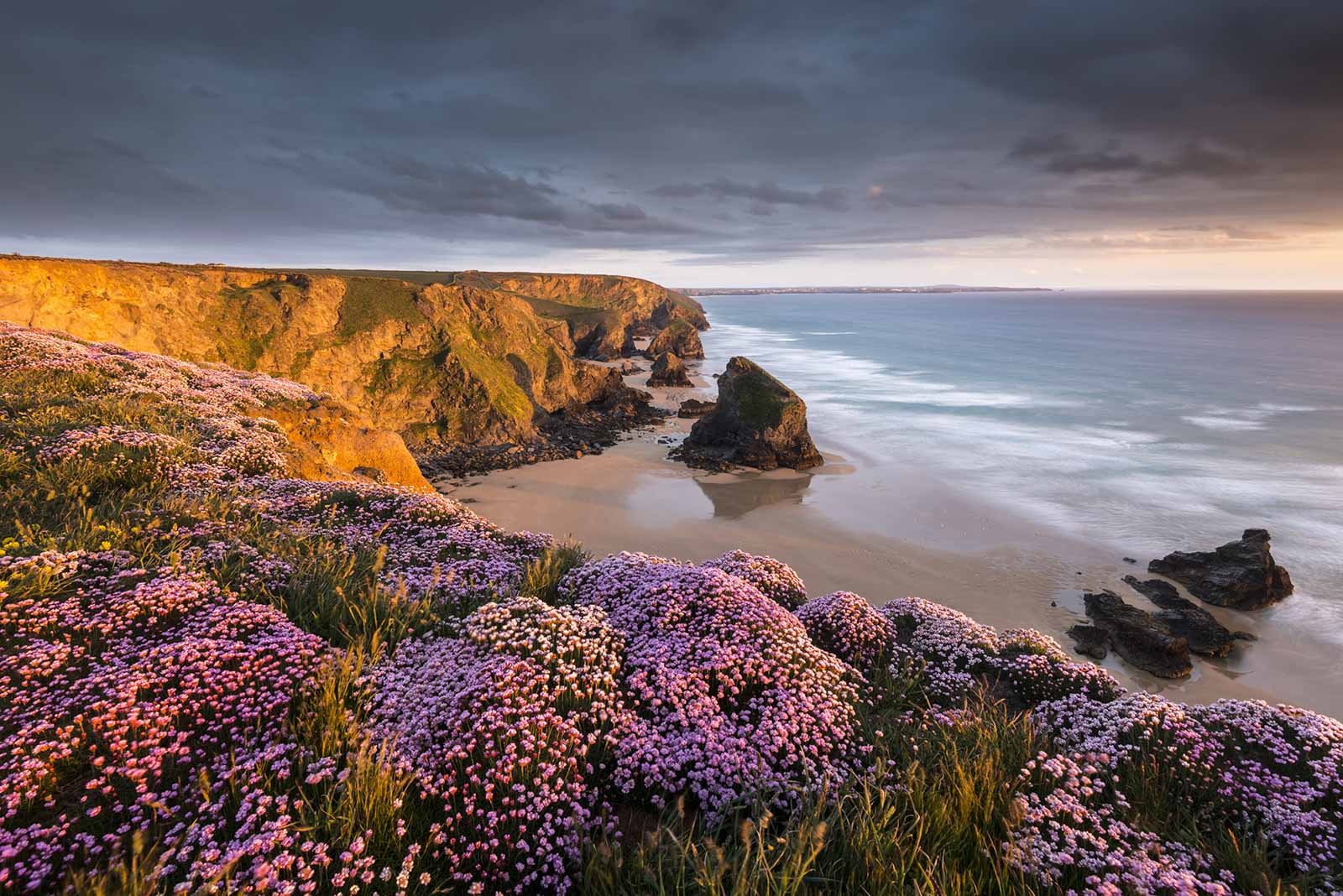
Moreover, the model impresses photographers with a fantastic sharpness in the center of the shot across the entire zoom range and aperture. The edges of the shot look great too.
This universal wide-angle lens is capable of capturing breathtaking landscapes and all kinds of natural phenomena during the day and at night.
As for drawbacks, the lens may produce vignetting and distortions.
7. Sony 35mm f/2.8 ZA
The lightest landscape lens
Size: 1.46 x 2.44 x 2.44 in | Weight: 4.23 oz | Minimum Focus Distance: 1,15 ft | Magnification: 0.12x
$![]() VIEW IN AMAZON
VIEW IN AMAZON

⊕ Exceptional sharpness
⊕ No distortions
⊕ Small size
⊕ Sturdy construction
⊖ No optical stabilization
If you are serious about photography, you definitely need to invest in 35mm and the 50mm lenses of any brand. Sony 35mm f/2.8 is probably one of the best lenses for landscape photography due to the exceptional sharpness of the shot and fast operation it offers.
To neutralize aberrations and provide remarkable resolution and contrast all over the frame at all apertures, the lens features three double-sided aspherical elements. Besides, the model boasts the Carl Zeiss T* (T-Star) coating necessary for eliminating flare, internal reflection and scattered light that is often present at glass-to-air surfaces.
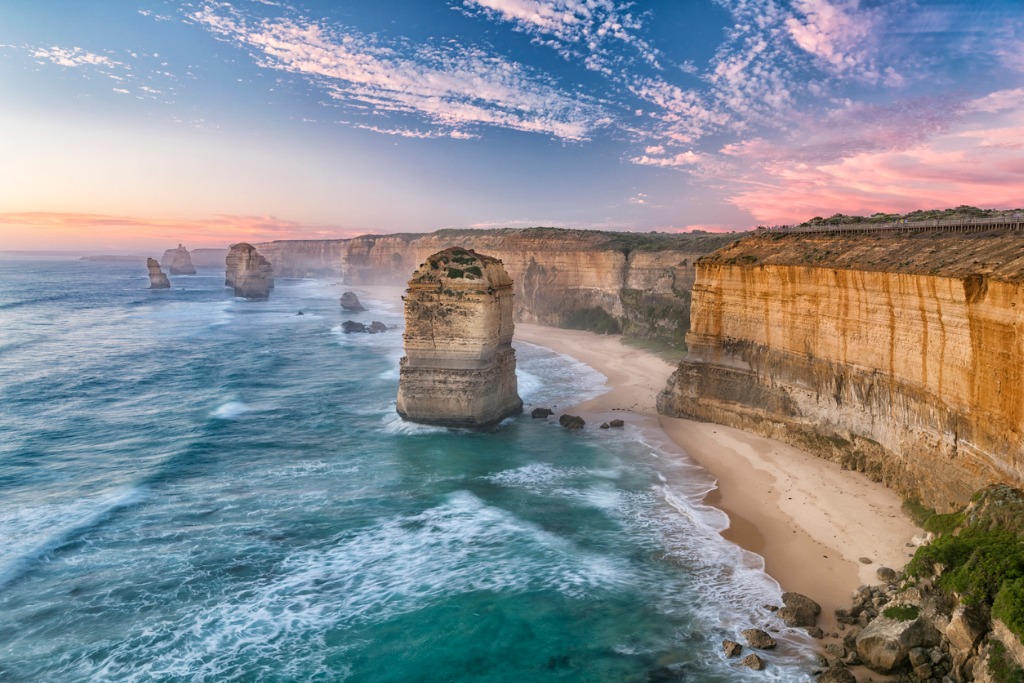
Sony 35mm f/2.8 is water- and dust-resistant. That’s why, don’t be afraid to use this lens in tough weather conditions, especially if you have a weather-proof camera.
In case you use a polarizing filter, you will appreciate that the filter thread at the front of the lens isn’t rotating.
This model catches the eye with its small size, so you can take it with you wherever you go.
- Check out the best filters for landscape photography.
8. Sigma 24-105mm f/4
Best landscape lens for beginners
Size: 4.29 x 3.5 x 3.5 in | Weight: 1.95 lbs | Minimum Focus Distance: 1.48 ft | Magnification: 0.22x
$![]() VIEW IN AMAZON
VIEW IN AMAZON

⊕ User-friendly
⊕ Decent sharpness
⊕ Optical stabilization
⊕ Full-frame coverage
⊖ Distortions across the entire zoom range
Sigma 24-105mm f/4 pleases photographers with the remarkable picture quality, optical stabilization and sharpness at any focal length. The high price is explained by lens versatility.

Being the best lens for landscapes, it lets you photograph a river, then immediately switch to photographing riverbanks, then take a macro shot of the running water. No need to bring any extra lenses and change them while shooting.
A drawback of Sigma 24-105mm f/4 is that it produces a barrel distortion of approximately 2.9%. Also, straight lines become slightly outward curved, which you can fix at the picture post-production stage.
9. Leica SL 24-90mm f/2.8-4 ASPH
Best landscape lens for professionals
Size: 9.3 x 6.4 x 6.3 in | Weight: 2.6 lbs | Minimum Focus Distance: 0.98 ft | Magnification: 0.26x
$![]() VIEW IN AMAZON
VIEW IN AMAZON

⊕ AquaDura coating
⊕ Sharp optics
⊕ Splash- and dust-resistant design
⊕ Optical stabilization
⊖ Very high price
⊖ Bulky
The most notable feature of Leica SL 24-90mm f/2.8-4 ASPH is universality. Its zoom range coverage is bigger than of other wide zoom lenses that start at f/2.8. Considering that it is a zoom lens, the model produces rather clear shots, provides close focus and causes almost no distortions. At wider angles, fall-off tends to darken corners, which can be fixed during picture editing.

The high price of the lens isn’t surprising, not just because of the high picture quality but because the Leica brand is known for its high price tags. This model has no serious drawbacks other than being rather bulky.
10. Zeiss Batis 18mm f/2.8
Best landscape lens for night photos
Size: 0.39 x 0.39 x 3.74 in | Weight: 0.73 lb | Minimum Focus Distance: 0,82 ft | Magnification: 0.1x
$![]() VIEW IN AMAZON
VIEW IN AMAZON

⊕ Very sharp in the center
⊕ Durable construction
⊕ Lightweight
⊕ Splash- and dust-proof design
⊕ User-friendly
⊖ Poor internal autofocusing mechanism
Zeiss is a manufacturer from Germany that has been producing optical systems for almost two centuries. Zeiss Batis 18mm f/2.8 is a universal and portable ultra-wide lens.
I really like handling this model without distracting buttons, controls or rings, only a nice OLED info window and a focusing ring. Thanks to such a minimalistic design and straightforward operation, photographers can fully focus on the shooting process.

Since the model is lightweight, you can take it on all kinds of trips and it will assist you in various shooting conditions.
Zeiss states that Batis 18mm f/2.8 is meant for astrophotography so it doesn’t disappoint when it comes to shooting stars and other night sky objects.
According to user reviews, with this lens, the camera’s auto-focusing motor tends to get stuck on focusing and produces a constant sharp motor sound.
- Check out the best camera for astrophotography.
11. Fujifilm XF 100-400mm f/4.5-5.6 R LM OIS WR
Best landscape lens for distant landscapes
Size: 11.4 x 7.7 x 5.2 in | Weight: 4.2 lbs | Minimum Focus Distance: 5.74 ft | Magnification: 0.19x
$![]() VIEW IN AMAZON
VIEW IN AMAZON

⊕ Exceptional optics
⊕ Weather-proof design
⊕ Noiseless and fast autofocus
⊕ Incredibly sharp
⊖ Too much plastic in construction
I can’t name any drawbacks of Fujifilm Fujinon XF 100-400mm f/4.5-5.6 R LM OIS WR other than heavy weight. The top-grade optical construction consists of 21 elements in 14 groups, including five ED lenses and one Super ED lens, which lower chromatic aberrations that are often produced by telephoto models.

The lens is distinguished by the most robust image stabilization system present on the market – 5.0-stop. So the photographers get clear shots without any shake even at the maximum telephoto setting of 609mm.
The front lens element features a fluorine coating that repels dirt and water, making the model even more functional and durable.
List of the Best Lenses for Landscape Photography
| Image | Name | Features | |
|---|---|---|---|
 |
Nikon 50mm f/1.8G
OUR CHOICE |
Check PRICE → | |
 |
Canon EF 16-35mm f/2.8L III USM
WIDE-ANGLE LENS |
Check PRICE → | |
 |
Canon EF 100-400mm f/4.5-5.6L IS II USM
BEST TELEPHOTO |
Check PRICE → | |
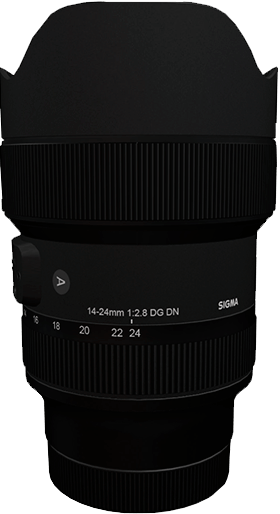 |
Sigma 14-24mm f/2.8 Art
VERSATILE LENS |
Check PRICE → | |
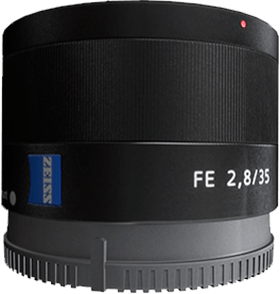 |
Sony 35mm f/2.8 ZA
LIGHTEST |
Check PRICE → |
How to Choose the Best Lens for Landscape Photography?
If you don’t know how to choose landscape lenses, you are sure to get lost in a wide variety of available options.
Focal Length and Lens Sharpness

Focal Length. Pay attention to this factor in the first place. You may think that landscape photography requires only a wide-angle lens. However, the scenes of this genre are quite varied and call for the use of four main lenses:
- 14mm f/2.8: A wide-angle, wide-aperture lens for astrophotography
- 16-35mm f/4: Meant for the most important range of wide-angle pictures
- 24-70mm f/4: A lens for regular focal lengths
- 70-200mm f/4: Perfect for photographing landscapes and smaller elements in detail at a distance
Lens Sharpness. This factor is important not only for the center of the frame. The edges should be sharp as well. A lens may produce blur off-center or lees sharp edge (min and max of the zoom range). Try f/8 – f/11 for the subjects located closer and at a distance. Examine center and off-center. After that, try f/2.8 and do the same. The center is still supposed to be super sharp.
Sensor Compatibility and Filter Radius

Sensor compatibility. DX lenses aren’t compatible with full-frame cameras. The projected shot turns out to be smaller than the sensor. As a result, you don’t get a full shot but a shot in a circle inside a black rectangle. There is always a possibility of cropping it; however, you will be a waste of the potential of your expensive full-frame sensor. FX lenses are compatible with FX and DX cameras equally.
Filter Radius. If you are going to actively use filters when photographing landscapes, pay attention to the filter radius and check if it fits the desired filters. A chosen lens may be so wide that it requires a certain filter and a specific holder, which will cost quite a lot.
Weather Protection and Distortions
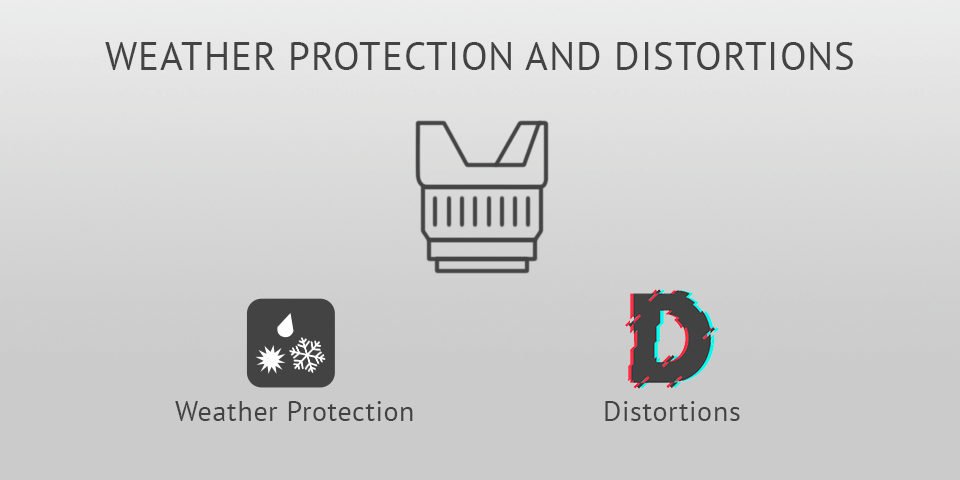
Weather protection. When shooting outside, your lens should be prepared for weather changes and rough conditions, like a strong wind, heavy rain, humidity or very high temperatures. So the best lenses for nature photography are those with weather-resistant design.
Wide-angle lenses are generally preferred for capturing expansive scenes, but they are also more prone to distortions. However, high-quality lenses with advanced optics can minimize these distortions to a great extent, ensuring that the captured images accurately represent the scene's natural perspective.
Photographers often look for lenses with low distortion levels to maintain the authenticity and integrity of the landscapes they photograph. By choosing lenses specifically designed to minimize distortions, they can capture scenes with enhanced accuracy and achieve stunning results that truly reflect the beauty of the natural environment.
Distortions. Check whether the lens doesn’t produce distortions, such as vignetting, chromatic aberration and barrel distortion. If you photograph in RAW, you can easily get rid of them. However, in case the amount of distortion is too high, don’t even consider such a lens.
FAQ
- • Why are wide-angle lenses popular for landscape photography?
Wide-angle models are popular because they have a broader field of view, allowing you to capture expansive landscapes and include more elements in the frame, creating a sense of depth and scale.
- • What is the "sweet spot" aperture for sharp landscape images?
The "sweet spot" aperture, often around f/8 to f/11, offers the best balance between sharpness and diffraction. It ensures most of the scene is in focus without sacrificing image quality due to diffraction.
- • Are there any specialized lenses for capturing fine details in landscapes?
Yes, tilt-shift lenses, also known as perspective-control lenses, allow you to correct converging lines and precisely control the focus plane. These lenses are valuable for architectural and landscape photography when preserving fine details is essential.
























